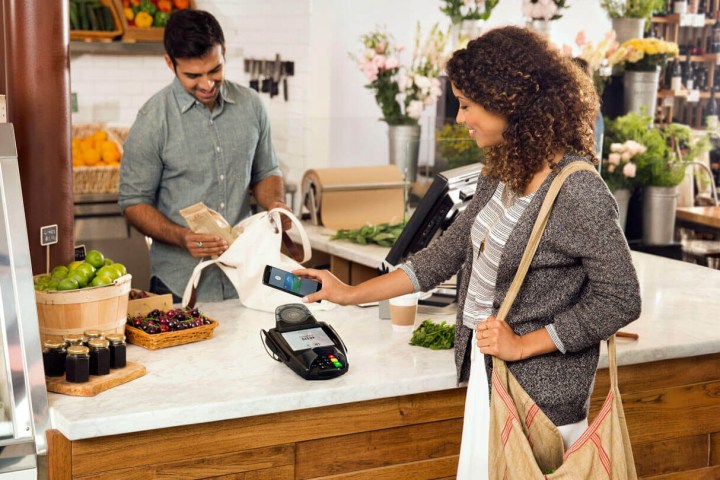
During a session part at its ongoing 2016 I/O developer conference, Pali Bhat, senior director of product management for Android Pay, demonstrated one of the service’s most appreciable additions: ATM cash withdrawals. Beginning today with Bank of America users who’ve associated a debit card with their Android Pay accounts can tap an NFC-compatible ATM with their Android Pay-enabled smartphone to take out cash — just as they would with a physical debit card. Functionality will at first be limited to a little over 600 ATMs in San Francisco and the Bay Area, but Bank of America hopes to expand that number to 2,400 machines by the end of May and 5,000 by 2017.
Android Pay is gaining another useful user feature: loyalty card payments integration. Forgetting to use a rewards card during a transaction’s a common problem among Android Pay users, said Bhat, but the Android Pay team thinks it might have the solution: automated rewards. Bhat demonstrated during the session with Walgreens’ loyalty program, Balance Rewards. Users with an existing account can simply tap a button from an SMS message, email, or push notification, or if need be, get one relatively simply — Android Pay auto-populates the name, address, phone number, and email fields of a program’s sign-up page. Once an account has been associated with Android Pay account, payments at a Walgreen terminal are automatically tied to Balance Rewards discounts and points.
On the backend, Google is making it easier for developers to integrate Android Pay into their apps and services. It’s opened Android Pay’s APIs to merchants of physical goods and services in markets where Android Pay is available, and introduced a new API — Payment Request — aimed at simplifying Web checkout processes. It’s, in a nutshell, a collection of simple tools to help retailers and developers create a “standardized” payments experience across browsers and platforms, which according to Bhan is key to customer retention — Android Pay merchants that have added features like auto-filled checkout fields have seen up to a 25 percent increase in conversions. Initial partners include Booking.com and Shopify, with more to come in the future.
The Payment Request API dovetails with Google’s Android Instant Apps project, a streaming system that allows mobile users to interact with apps without installing them. Developers who support it can integrate Android Pay for single-tap transactions that feel like native, on-phone experiences, Bhan said.
Finally, Google’s added support within Android Pay for third-party payment processors including Stripe, Vantiv, and Braintree that only require developers to write “a few lines” of code to integrate, according to Bhan. For developers using a payments processor that doesn’t support Android Pay, Google’s introducing a self-service API, in addition.
The collective goal of the new features is to reduce the developmental, infrastructural, and geographical barriers to Android Pay, said Bhan. “We believe that mobile payments can make for a better, more secure shopping experience — so we’re in this together for the long haul,” he said. “We’re building a robust Android Pay ecosystem, one that’s open and scalable, to enable developers to drive mobile payments — and their businesses — forward.”

